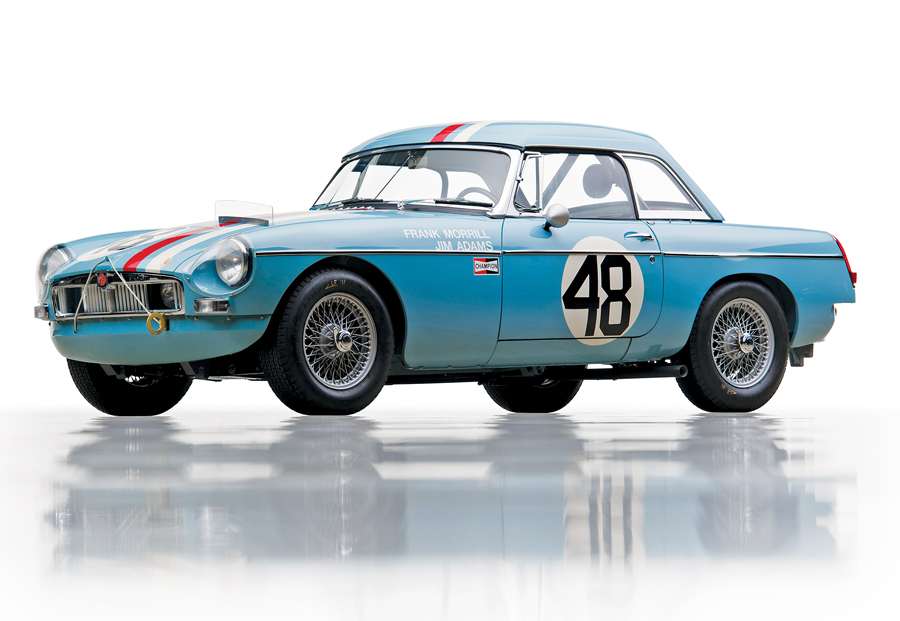No chassis number available
As they faced a relative failure at Sebring in 1963, MG was hoping that 1964 would bring a change in fortune for the proud marque. By this time, the MGB had been on sale for over a year, and MG was hoping to add to the car’s image with some success at international racing events. Abingdon took note of the success that Kjell Qvale, of British Motor Cars Distributors, experienced in San Francisco in 1963, where they had finished 7th overall behind a streak of Ferraris, and he hoped that Qvale and his team could bring the success they were looking for in 1964.
BMC instructed Qvale to modify a trio of stock MGBs with upgraded components that had been sent over from MG in the U.K. and to build the cars to competition specifications. This included adding aluminum front fenders, an aluminum bonnet, a boot lid, and aluminum doors fitted with Perspex windows. Competition-specification 4-cylinder engines were delivered to Qvale and immediately rebuilt by Joe Huffaker, the head of the competition department at BMCD, who added new pistons, revised porting, and his own custom-made camshafts. These engines were fed by dual gas tanks, and multi-speed windshield wipers were fitted to combat the possibility of rain.
As they were British cars campaigned by an American distributor with factory support, deciding on a racing livery for the three cars was quite simple: red, white and blue.
For Sebring, the white number 46 would be driven by Jack Flaherty and Jim Parkinson, while Jack Dalton and Ed Leslie would be behind the wheel of the red number 47 and Jim Adams and Merle Brennan would pilot the blue number 48. Although the MGs got off to a good start when the green flag was dropped, they faced fierce competition from a pair of factory-supported Porsche-Abarth Carreras, and the team hoped that they would outlast the cars over the following 12 hours.
Twelve hours after the start, the remaining MGs finished 3rd and 4th in class, with the red number 47 car taking 17th overall and the blue number 48 car taking 22nd overall, which were good results for the two cars from Abingdon.

